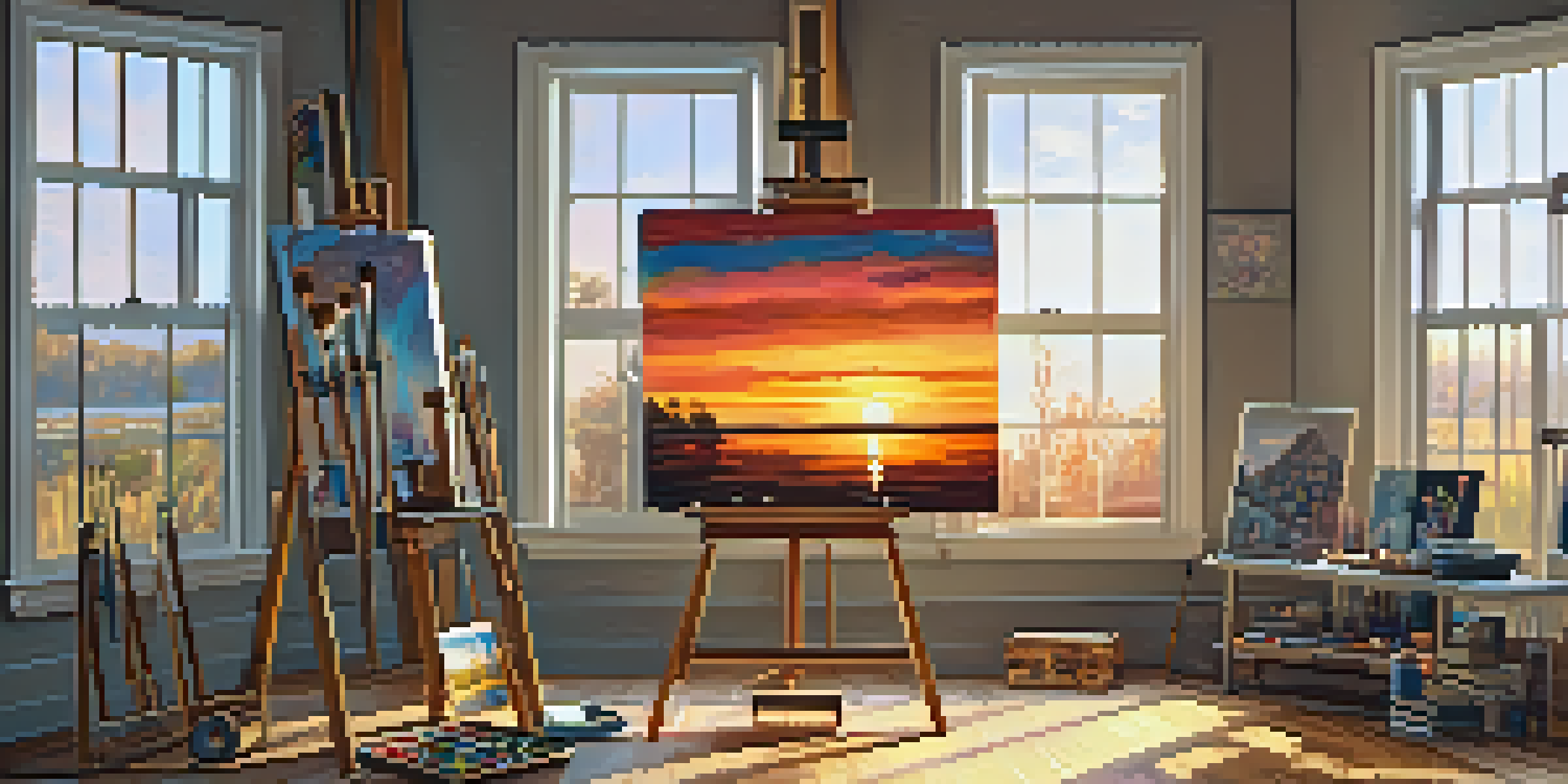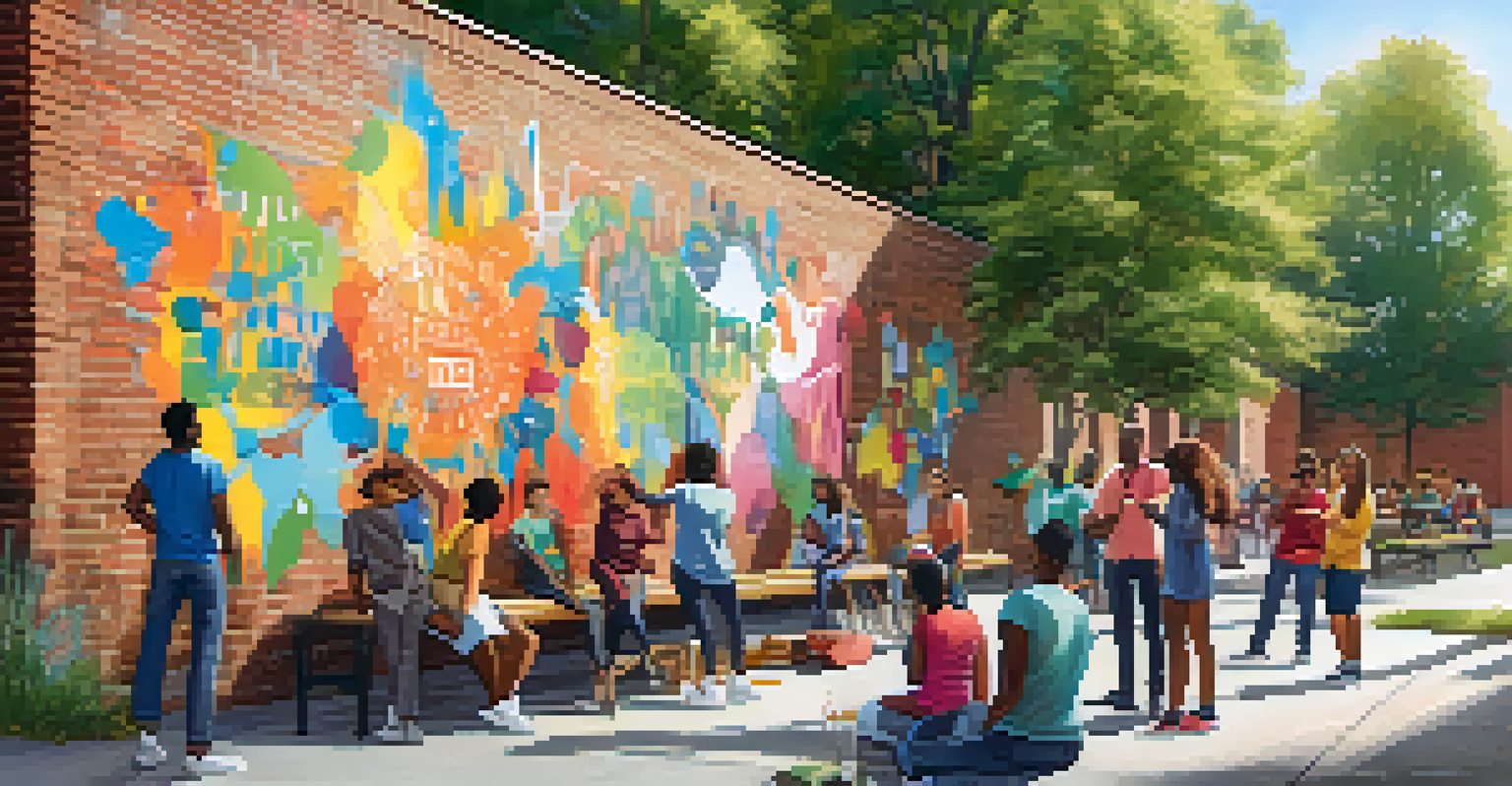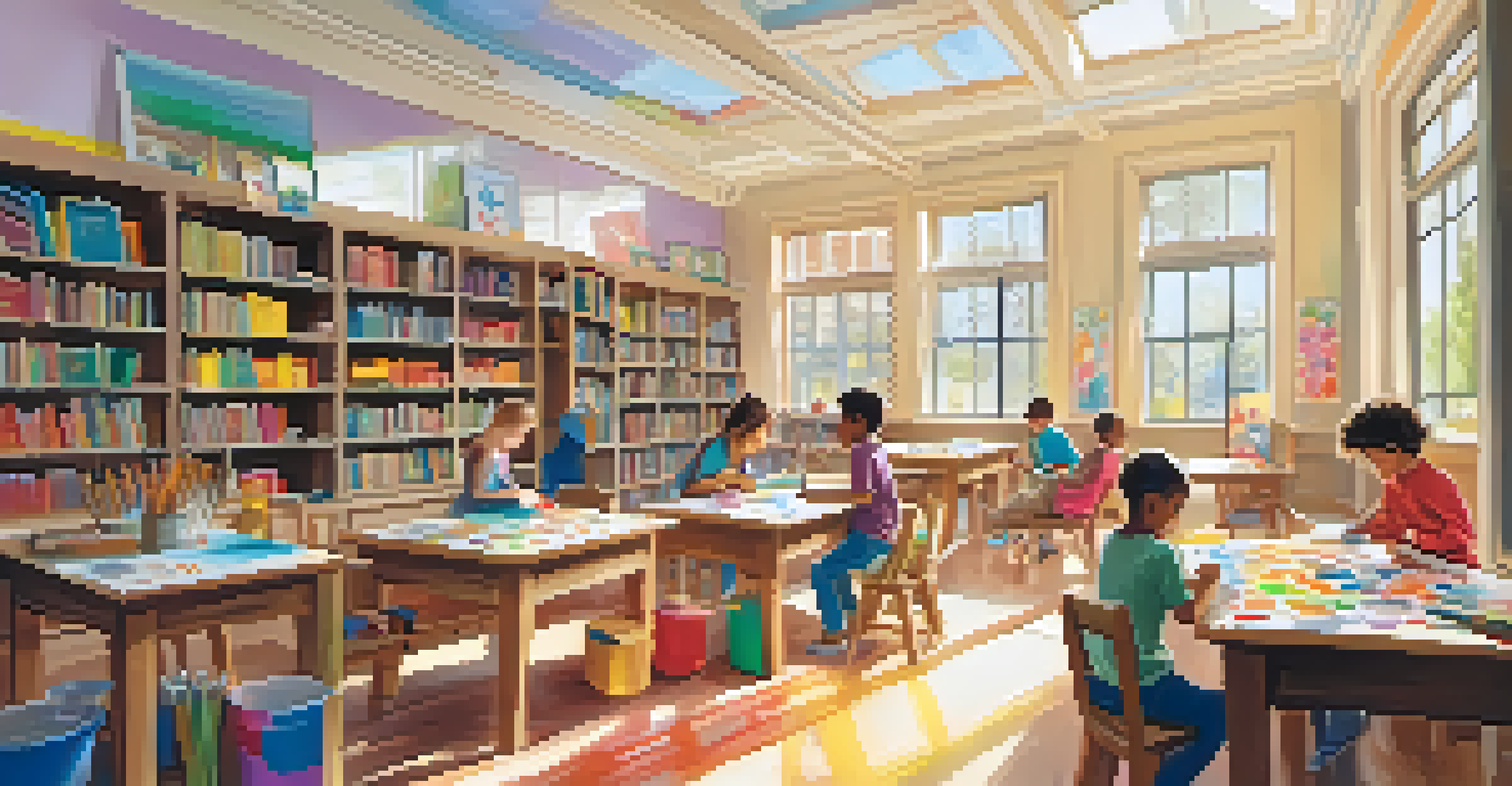Art and Resilience: Building Strength Through Creative Expression

Understanding Resilience: What It Means to Bounce Back
Resilience is often described as the ability to bounce back from adversity. It's not just about surviving tough times; it's about growing stronger and wiser through them. Think of resilience like a rubber band—it can stretch and twist, but it ultimately returns to its original shape, often with a little extra strength.
Art is the most beautiful of all lies.
This concept of resilience is crucial in today's fast-paced world, where challenges can come from all angles—personal struggles, professional setbacks, or global crises. By embracing resilience, we learn to navigate these challenges with a sense of hope and determination. And one powerful way to cultivate this resilience is through creative expression.
Art, in all its forms, provides a safe space for us to process emotions and experiences. Whether it's painting, writing, or performing, these creative outlets allow us to explore our feelings, ultimately leading to personal growth and resilience.
The Healing Power of Art: A Therapeutic Journey
Art therapy has gained recognition as a legitimate form of healing, helping individuals process trauma and emotional pain. By engaging in creative activities, people can articulate their feelings and experiences that they might struggle to express verbally. This therapeutic approach emphasizes that creativity can be a catalyst for emotional healing.

For instance, many artists find that creating a piece of art during tough times allows them to release pent-up emotions. This could be as simple as a doodle or as complex as a full-blown painting. The act of creating can serve as a form of catharsis, providing clarity and relief from inner turmoil.
Resilience Through Creative Expression
Engaging in art allows individuals to process emotions and grow stronger through adversity.
Moreover, art can help build a community of support. When people share their creative expressions, they often find common ground with others who have faced similar struggles, fostering connections that can reinforce resilience.
Creative Expression as a Coping Mechanism
When life gets overwhelming, many people turn to art as a way to cope with their emotions. Engaging in creative activities can distract the mind, allowing individuals to focus on the task at hand rather than their worries. This shift in focus can provide a much-needed break from stress.
Every artist dips his brush in his own soul, and paints his own nature into his pictures.
For example, someone feeling anxious might find solace in writing poetry or playing music. These activities not only help to alleviate stress but also empower individuals to express themselves in a way that feels authentic. This kind of expression can be incredibly liberating, fostering a sense of control over one's circumstances.
By making art a regular practice, individuals can create a healthy routine that bolsters their emotional well-being. Over time, this consistent creative expression can lead to increased resilience, enabling them to face challenges head-on.
Art as a Reflection of Personal Journeys
Every piece of art tells a story, often reflecting the artist's personal journey through hardship. This storytelling aspect of art allows creators and viewers alike to confront and understand their experiences. By sharing their stories through art, individuals can find meaning in their struggles.
For instance, a painter might depict their battle with anxiety through abstract brushstrokes, while a writer might pen a novel that mirrors their experiences of loss. These creative outputs serve not only as a record of their journey but also as a source of inspiration for others facing similar challenges.
Community Strengthens Artistic Resilience
Collaboration and support within artistic communities foster connections that enhance resilience.
This shared experience can create a sense of collective resilience, as people come together to appreciate and support one another's journeys. By recognizing that others have faced similar struggles, individuals can feel more connected and less alone in their experiences.
The Role of Community in Artistic Resilience
Community plays a vital role in fostering resilience through art. When individuals come together to create, share, and celebrate their artistic endeavors, they build strong support networks. These connections can help people feel validated and understood, especially during tough times.
Consider community art projects, where local artists collaborate to create murals or installations. These projects not only beautify spaces but also bring people together, encouraging dialogue and shared experiences. Such gatherings foster a sense of belonging and purpose, which can be incredibly empowering.
By participating in a community of artists, individuals can learn from one another and share their coping strategies. This exchange of ideas can enhance personal growth and resilience, making the community a powerful force for collective healing.
Art Education: Nurturing Resilience in Future Generations
Integrating art education into schools can play a crucial role in nurturing resilience among students. By encouraging creative expression from a young age, we equip children with the tools they need to navigate life's challenges. Art education fosters critical thinking, problem-solving, and emotional intelligence—all essential traits for building resilience.
For example, students who engage in the arts learn to express their emotions and thoughts creatively, which can enhance their self-awareness and confidence. This foundation can be invaluable as they face personal and academic obstacles in the future.
Art Education Builds Future Resilience
Integrating art education in schools equips students with essential skills to navigate life's challenges.
Moreover, by creating an inclusive environment that celebrates diversity in artistic expression, schools can help students feel valued and accepted. This sense of belonging can significantly boost their resilience, empowering them to overcome challenges with creativity and confidence.
Embracing Art for Personal and Collective Resilience
In conclusion, art is more than just a form of expression; it's a powerful tool for building resilience. By engaging in creative activities, individuals can process emotions, tell their stories, and connect with others. This journey of self-discovery and healing through art is essential for personal growth.
As we've seen, the benefits of creative expression extend beyond the individual. Communities that embrace art foster collective resilience, creating supportive environments where everyone can thrive. In challenging times, these communities become beacons of hope and strength.

So, whether you're an aspiring artist or simply someone looking to explore your creative side, remember that art has the potential to empower you and those around you. Embrace it, and watch how it transforms both your life and your community.